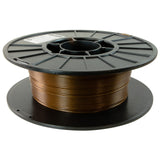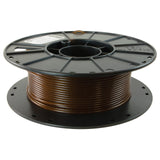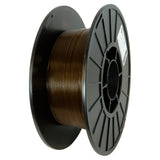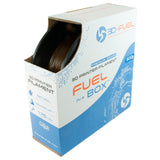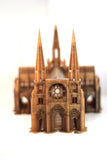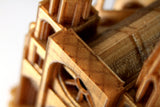Wound Up Coffee-filled PLA
Wound Up™ is a coffee filled 3D printing filament made using waste byproducts from coffee. Wound Up™ uses those coffee left-overs to create a special 3D printing material with visibly unique print finishes. The filament produces products with a rich brown color and a noticeable natural grain. Now a cup printed with Wound Up™ is a true “coffee cup.” CAUTION: Wound Up™ coffee filament uses PLA as it’s base polymer. Because of this you should NOT use it for 3D printing anything that will come in contact with high heat or hot liquids. In other words, it IS NOT safe to print a functional coffee cup with this material. Wound Up™ filament can be printed on any machine capable of printing with PLA using standard PLA settings.
500g (1.1lbs) spools
| Wound Up Coffee-filled PLA | |
| Recommended Extrusion Temperature: | Wound Up™ prints well at 180-210°C. In general, a good starting point is 10°C cooler than you typically print standard PLA. |
| Recommended Nozzle size: | 0.5mm or larger diameter nozzles. Smaller diameter nozzles can be used but have a higher likelihood of clogging. |
|
Recommended Retraction Settings: |
0.25mm per 0.1mm of nozzle diameter (ie. 1.25mm retraction when using a 0.5mm diameter nozzle) |
|
Recommended Print Surface: |
Hot - Glass heated to 60-70°C or 50°C with a very light coat of pva glue. (if using any glue, or hairspray with a heated bed use it very sparingly. PLA will stick very well and can be difficult to remove without braking or chipping the glass. Cold - Blue Painter's tape, glass with a coat of glue, Buildtak surfaces. PLA bonds very firmly to acrylic. Printing directly on an acrylic surface is not recommended. |
|
Print Cooling fan? |
Print cooling fans are highly recommended with PLA-based filaments and usually results in a very noticeable improvement in the appearance of the print. Print cooling fans also greatly improve the ability to bridge gaps and print overhanging areas without support when using PLA-based filaments. |







